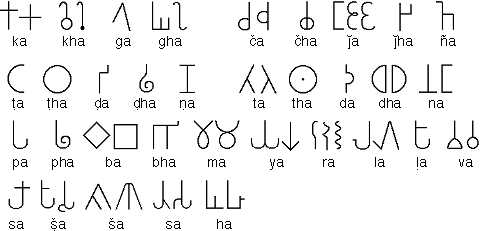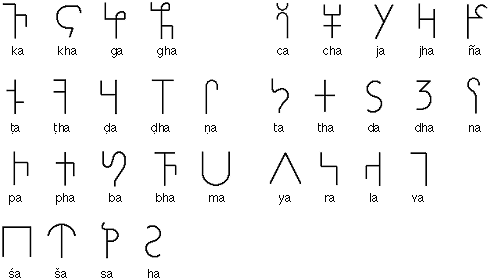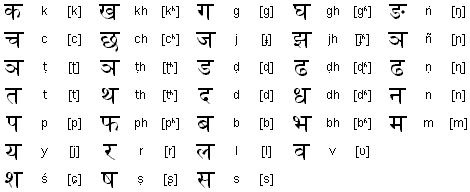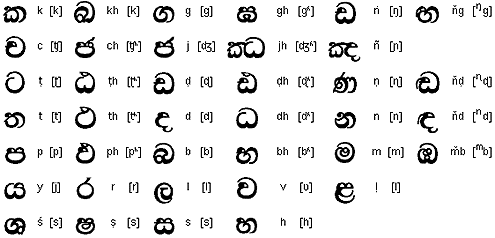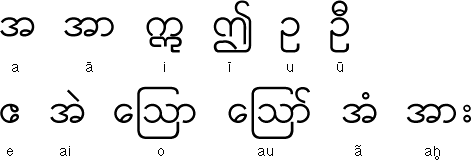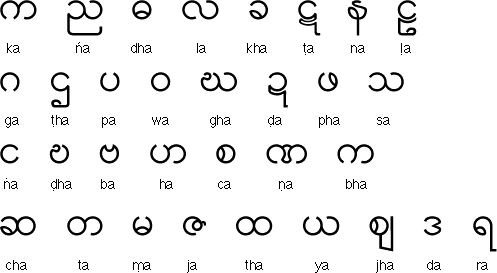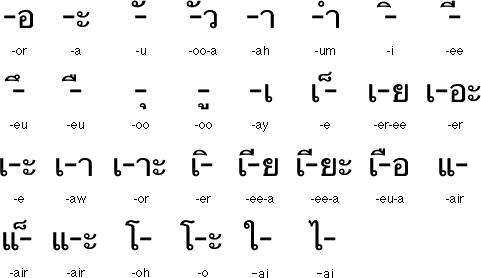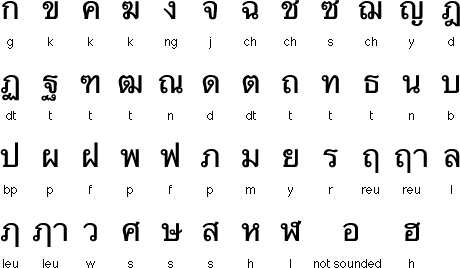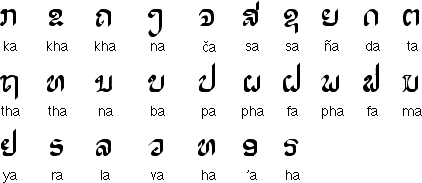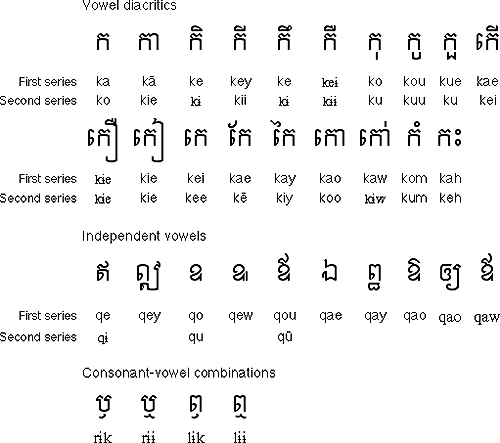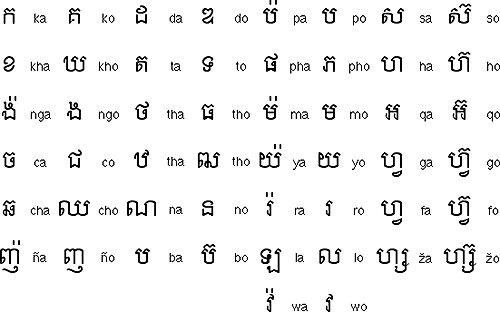1. 字母与发音 (中文)
回到 页首目录 巴利语简介 Paali is a member of the Indo-European family of languages, together with most languages of Europe, Iran and northern India. Inside this family it belongs to so-called Middle Indo-Aryan languages. This group is also called Prakrits in Indian linguistic works. Paali can be considered as one of the oldest surviving Prakrits. 巴利文与欧洲、伊朗、北印度大部份的语言一样,是印欧语系的一支。在印欧语系之中,巴利文归属于中印度-亚利安语系,此语系在印度语言学着作中也被称为Prakrit语。因此巴利文可以说是现存最古老的Prakrit之一。 The origin of Paali is still unclear. It was for a long time considered to be identical with Maagadhii, the Prakrit of Magadha, where the Buddha spent most of his life and teaching career. This ancient region is situated in modern Indian state of Bihar, in North-Eastern India. But more careful examination in recent years showed that Paali bears closer resemblance to Prakrits of Western India than to that of Magadha. The famous Indian emperor and patron of Buddhism A`soka, who lived only a few centuries after the Buddha, left many inscriptions all over his empire which stretched far beyond the borders of present day India. All these inscriptions were written in local vernaculars, using different scripts that were in use in that place and time. Paali is very close in grammar and orthography to the language of the inscriptions in what is now the Indian state of Uttarpradesh. 巴利文的起源目前仍然是不清楚的。曾经有一段很长的时间它被认为是与摩揭陀地方的古语摩揭陀语同源的,摩揭陀是佛陀度过大部份的生命与教学生涯的地方,这古代的地区位于现代印度东北方的比哈尔省。但近年来更多仔细的调查显示出,巴利文跟摩揭陀地方的Prakrit语比起来,更相似于西印度的Prakrit语。佛陀死后几个世纪,着名的印度国王、佛教的领导者阿育王,在他远比现代印度领土更为广大的帝国各地遗留下许多碑文,这些碑文都是使用各地的方言所写,用的是当地当时所使用的各地不同的字体。巴利文和现代印度Uttarpradesh邦所发现的碑文文字在文法及拼字方面是相当类似的。 Therefore it is safe to assume that Paali was created artificially, probably not on purpose, but rather as monks and nuns from different parts of India came into contact with each other and were forced to adapt their vernaculars to new environments in order to understand and be understood. 因此,若假设巴利文是人为地被创造的将是不会引起争议。与其说它是刻意地被创造出来,不如说是印度各地的僧尼彼此接触后,被迫改变他们的方言去适应新环境,以便能够彼此沟通了解。 Paali was and is written in many different scripts. In India, it was written in ancient Indian scripts Braahmii and Kharo.s.thii. When Buddhism spread to other parts of the world, local people used either original Indian scripts (so Kharo.s.thii was used for a long time in Central Asia) or switched to their own local scripts. So in Sri Lanka, Paali is written in Sinhalese script, in Burma it is Burmese script, in Thailand Thai script and in Cambodia the Khmer script. Finally, when Western scholars and practitioners started to learn about Buddhism, they used Roman characters to write Paali language. 巴利文在过去和现在使用许多不同字体,在印度,它用梵寐文字和佉卢虱吒文字等古印度字体写成。当佛教传播到世界其他地区时,当地人民会使用原始印度字体──因此佉卢虱吒文字在中亚被使用了一段很长时间──,或者会将原始印度字体转写成当地文字──例如在斯里兰卡,巴利文是以锡兰语改写;在缅甸是以缅甸语改写;在泰国是以泰语改写;而在柬埔寨是以高棉语改写──。最后,当西方学者及修行者开始学习佛教学时,他们使用罗马字体改写巴利文。 This page was created using some material downloaded from
Omniglot Miroslav Rozehnal 梵寐文字 (印度) Brahmi Script (India)
回到 页首目录 佉卢虱吒文字 (印度) Kharosthi Script (India)
回到 页首目录 天城文字 (印度) Devanagari Script (India)
回到 页首目录 锡兰文字 (斯里兰卡) Sinhalese (Sri Lanka) Script
缅甸文字 Burmese Script (Burma/Myanmar)
泰国文字 Thai Script (Thailand)
老挝文字 (寮国) Lao Script (Laos)
高棉文字 (柬埔寨) Khmer Script (Cambodia)
罗马化字母与发音
回到 页首目录 依字典顺序排序的字母
回到 页首目录 发音练习 单字发音练习(以下单字仅列一个常用意思)
句子发音练习1) 皈敬偈 (总礼文)
2) 三归依文
3) 超世偈 (Dhammapada 354)
4) 通诫偈 (Dhammapada 183)
5) 缘起法颂 (Vinaya-pitaka, Mahavagga, I. 40. (5))
6) 三相 (tini lakkhanani)
7) 无常偈 (Mahaparinibbanasuttanta)回到 页首目录 |
|
||||||||||||||||||||||||||||||||||||||||||||||||||||||||||||||||||||||||||||||||||||||||||||||||||||||||||||||||||||||||||||||||||||||||


